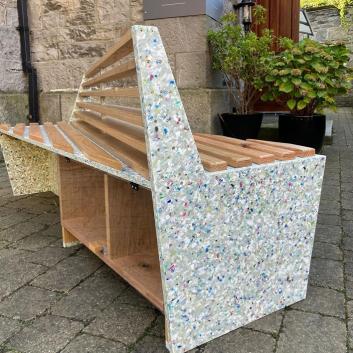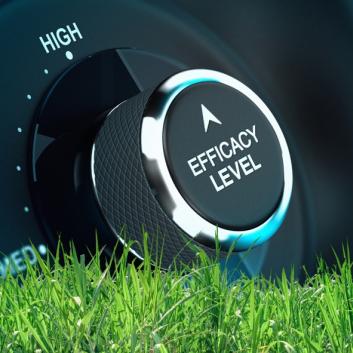Why e-waste cannot be ignored any longer?
According to the World Health Organization, e-waste is the fastest-growing solid waste stream in the world. E-waste, or as it is sometimes called electronic waste, refers to technological products that have been discarded.
The EU refers to this type of waste as Waste from Electrical and Electronic Equipment (WEEE), and according to data from 2020, 12.4 million tonnes of it was put on the market.
Usually, these products are thrown away because they are either near the end of their life, have stopped working, or are no longer wanted. Common examples of e-waste include computers, radios, televisions, and smartphones.
People discard electronic devices for various reasons, but one significant one is due to the arrival of upgraded technology and new devices.
The disposal of e-waste presents a variety of threats to human health and the environment since this kind of waste traditionally contains toxic chemicals.
These chemicals are safe to use and be around above the ground, but they leach from the metals inside when thrown into landfills. Harmful chemicals in electronic waste include lead, mercury, cadmium, and beryllium.
These chemicals can react similarly to plastic when they reach a landfill in that they can break down into microscopic traces. If these chemicals end up in our food, they can have adverse effects.

Electronic waste disposal could potentially harm wildlife and pollute our waterways, too, if the e-waste particles leak through the soil to reach groundwater, making their way into rivers, streams, ponds, and lakes.
Once they reach water sources, acidification and toxification occur in the water, causing the water to become polluted and disrupting biodiversity.
If e-waste is not disposed of correctly, it can also contaminate soil.
The heavy metals and flame retardants found in e-waste can be absorbed into the soil, which could risk crops and plants. The contamination can be so harmful that crops never regrow in the area.
These toxins can also potentially remain in the soil, continuing to harm soil and plant microorganisms.
When electronic waste is exposed to heat, toxic chemicals are released into the atmosphere, polluting the air. A study from 2019 exploring this found e-waste contributes to high levels of air pollution and is responsible for the highest level of heavy metal exposure to citizens.
Given the gravity of the e-waste problem, some tech giants and start-ups are already working to tackle e-waste to drive the circular economy.
Lenovo, for example, has committed that 80% of its devices will be repairable by 2025. They plan to use more modular designs and standard parts in their products to achieve this.
This will make it easier for users to replace faulty parts without replacing the entire device. Lenovo will also provide repair guides and spare parts to users to make it easier for them to repair the devices themselves.
Reboxed, a sustainable tech startup, is also working to tackle the e-waste crisis by rehoming 100 million electronic devices by 2030.
The startup received 1.8 million euros in seed funding and provides out-of-the-box solutions for retailers and businesses to accelerate the move to a circular economy.
They have built a leading brand and re-commerce platform connecting customers and companies with a better and more sustainable way to buy and sell technology.
Besides the environmental and health implications of handling e-waste, there are also many controversial issues related to raw materials used in electronic devices, such as human rights.

Every function of modern phones, from touch screens to sending messages, taking pictures, or simply charging batteries, relies on using minerals and metals such as cobalt, lithium, potassium, silica, and others.
More than 30 elements are needed to assemble a single smartphone brought from a minimum of 8-10 countries worldwide, dominantly from developing nations with no proper regulations or law enforcement in place to ensure human rights and environmental standards.
For instance, Cobalt is used in phone batteries and is also an essential material for the global green energy transition as it is used in other electronics and automotive industries, amongst others.
One of the most prominent cobalt suppliers is the Democratic Republic of Congo, where miners are exposed to dangers and children are still working in hazardous and damaging environments at mine sites, according to the Fair Cobalt Alliance.
Dutch social enterprise Fairphone recognised a growing demand for more sustainably and ethically produced smartphones and created a modular, repairable and on-all-front transparent version, successfully releasing their latest 5th edition in 2023.
The ever-growing problem of electronic waste requires unique and practical solutions. Technology companies need to design better products that can be repaired and reused. In addition, we need to ensure that more convenient recycling methods are available for consumers.
The EU Commission introduced new consumer rights for easy and attractive repairs in 2023 to ensure that more products are repaired within the legal guarantee and that consumers have easier and cheaper options to repair products that are technically repairable when the legal guarantee has expired or when the good is not functional anymore as a result of wear and tear.
The Council and the European Parliament reached a provisional deal on the directive, also known as the right-to-repair, in February 2024, which maintains the consumer's right to choose between repair and replacement when a product is broken or defective.
The EU WEE Directive also aims to tackle this issue by setting rules and targets for the proper collection and treatment of these types of waste while helping European countries fight illegal waste exports more effectively and reducing administrative burdens.
The real smart move in developing the next generation of mobile and electronic devices is to look at their entire life cycle and what would make them more sustainable and ethical besides the tech-magic features.
Headline image by Freepik

















